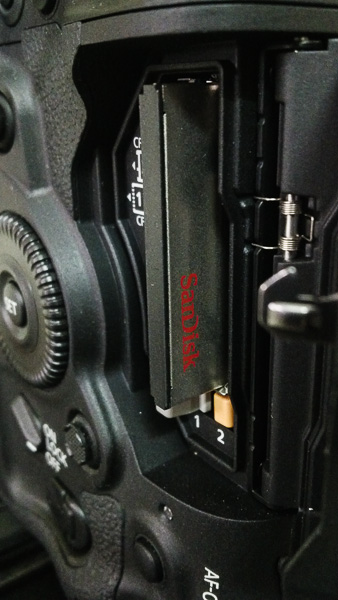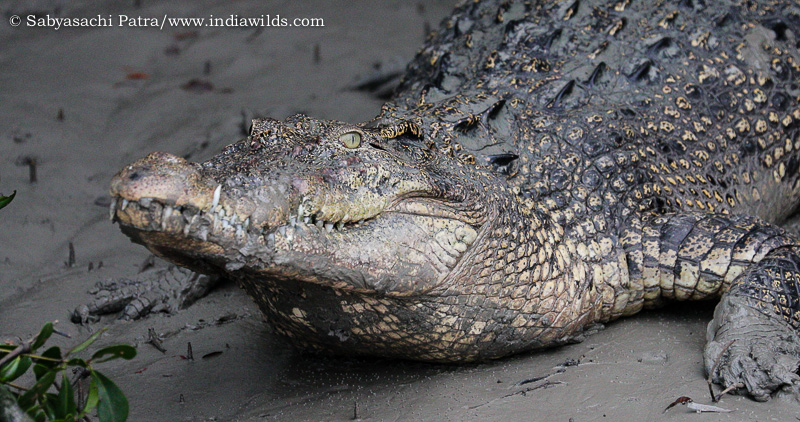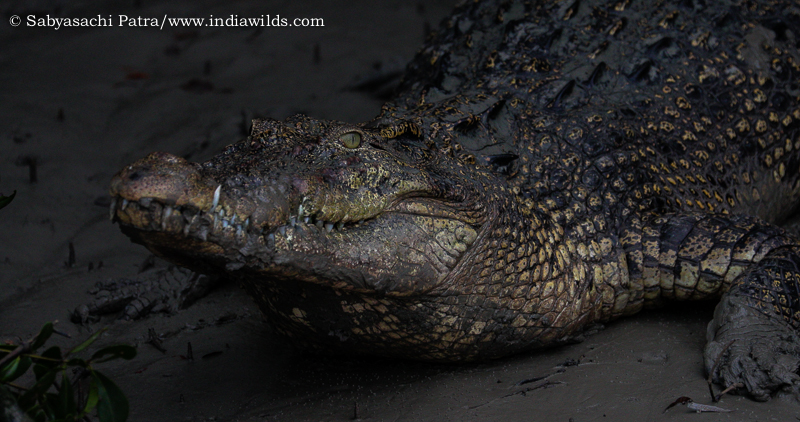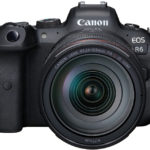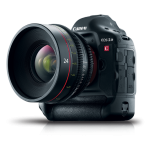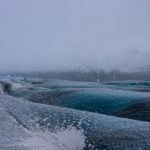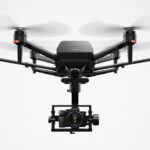Canon EOS 1DX Mark II Review
Introduction:
The Canon EOS 1DX Mark II was one of the most awaited flagship DSLR cameras to hit the market in the recent times. Following is the hands on impression of the EOS 1DX Mark II camera. This is more of an evolving review and you will find this review to be updated many times as I continue to put it to test in a range of situations. A montage of shots filmed in 4K resolution during my recent Sundarbans trip has been linked here so that you can understand the quality. https://youtu.be/JIVBYVFCmPc
Sensor Size:
The Canon EOS 1DX Mark II has a full frame CMOS sensor (36mm x 24mm) for stills shooting and HD Video shooting. For shooting 4K videos, the camera uses a central portion of the sensor.
Resolution:
It shoots 20.2 Megapixels still photos. The maximum resolution of still photos is 5760 x 3240 pixels
Build Quality:
Since it is the top of the line professional DSLR model the build quality is impressive. I have always loved the rock solid feel that the 1 Series cameras of Canon since the first time I picked up a EOS 1V HS still camera a decades ago. That feeling continues even till date.
In the past I have used the 1D series cameras in extreme situations in rain, sandstorm, hail etc and it has never failed me. So I expect the 1DX Mark II camera to also be a robust fighter.
The buttons and the body is textured and helps in easy grip. One can feel around and press the buttons as well without taking the eye off the viewfinder while clicking still shots or when shooting movie using a LCD viewfinder.
While unboxing this camera, I was stunned by the thick instruction manual of the 1DX Mark II. It is some 564 pages thick. If you want to indeed master the camera then better to read the manual thoroughly. However, I didn’t have sufficient time before a trip to read the manual. Nevertheless it was more or less intuitive if you have used a Canon camera before.
Recording Media:
The 1DX Mark II has slots for CF card and CFast card. The first card is CF and the second is for CFast 2.0 cards. Though the eject buttons for the CF card and CFast 2.0 cards are marked with two different colours, the CFast card has to be inserted with its front portion away from you. I am sure many people will have bent pins because of this.
I am not too happy that Canon has included one CF card slot and one CFast 2.0 slot. Since this camera is aimed at the professional and CFast 2.0 is the emerging standard in all professional cameras, Canon should have included dual CFast 2.0 card slots. A person who is spending $6000 usd or some 0.4 million Indian rupees would love the best and not skimp on cards which will affect his/her performance.
I would have loved if Canon would have given us the ability to direct stills to be recorded in CF card slot and videos to be recorded to the CFast 2.0 slot. When I am shooting video at 4K 50p the data rate is massive and I am always hoping that the 128 GB CFast card doesn’t get full. Having two CFast 2.0 cards would have ensured that the video would have spilled over to the other card. This is just a piece of code to be written. Wish Canon can do that through a future firmware update.
Stills shooting ability:
The Canon EOS 1DX Mark II camera has got impressive abilities. It can fire off 14 frames in one second. And if one uses the live view to shoot stills then the 1DX Mark II can shoot 16 shots per second. This is really impressive.
I belong to the old school. So while shooting wildlife, I anticipate the action and then fire 3-4 shots at one go. When I was shooting with a EOS 1V HS camera using negative rolls or slide films, I had never used the ability to fire off 10 frames per second. Ofcourse firing at such a speed would have ensured the roll to be over in 3 seconds or so. However, the main point of not firing at 10 frames per second was the lack of action. And that is the major problem even today. Even when there is peak action infront of you, not every frame would have the right composition and eye contact. So firing like a machine gun is a sheer waste in my opinion. If a bird is in flight there is only a narrow range infront of you when the eye contact, light angle and wing spread would be favourable. Most of the photographers prefer to go for a hit and miss situation of firing in bursts and hoping that they will get one good frame. I don’t believe in “Spray and Pray”. So I am not likely to use the full 14 fps burst many times.
The 1DX II allows a person to shoot a burst of 170 shots in raw in a single burst. If you were to keep on pressing the shutter, never lifting your finger, then you can shoot for some 12 odd seconds at 14 fps. And if you use live view mode and shoot at 16fps then you can shoot for roughly 10.6 seconds. That much power is impressive.
However, I am wondering when Canon will be able to pack in sufficient processing speed in the DSLR to give us 25 frames per second burst. That actually means raw video at some 5K+ resolution. Even a short duration burst of raw video of about 7-8 seconds from a central portion equivalent to 4K resolution would be enough to make it way more popular.
Autofocus:
I am bowled over by the impressive autofocus capabilities of this camera in both stills and video mode.
The rear LCD has touch screen capabilities. So for shooting video I can always touch and rack focus from one point to the other. Unfortunately, while shooting handheld it is not easy to do this operation. Wish the LCD was foldable like the Canon 80D. That would have made this camera really awesome.
When I first heard that this camera has got an iTR AF (Face Priority) mode which is described by Canon as intelligent Tracking and Recognition autofocus (face priority) intelligent face detection mode, I thought recruiters and placement consultants will use this camera to scan a crowd and zero in on people who are intelligent as the intelligent face detection mode was supposed to focus on intelligent people. However, when I pointed the camera it focuses on both intelligent as well as dumb faces. Looks like this camera doesn’t have such an algorithm which can prioritise and focus on intelligent faces. 🙂 I guess one should read the 564 page instruction manual before trying out this camera.
Jokes apart, the iTR AF selects the focus based on AF info as well as the human face and the subjects colour information. With AI Servo AF on the subject is tracked giving weight to the information on which AF point the auto focus was first achieved as well as facial information. I realised this while shooting in Sundarbans from a motor boat. I was handholding the 1DX II and filming birds from a moving boat and when the framing changed due to a sudden movement of the motor launch the autofocus. Anyone who has filmed in such conditions know that getting smooth shots in such condition is next to impossible as the framing changes due to the movement of the boat. However, the focus mostly remained good and locked to crocodiles and other my non-human species that I was shooting. I think Canon is really in the right path as except in couple of cases from the moving boat I mostly had the AF on while filming.
High ISO ability in Stills:
The 1DX Mark II can shoot from ISO 50 to ISO 409600 while shooting stills. In Sundarbans while wandering in a village after sunset in the dark, I decided to test ISO 40000 (ISO forty thousand) to take a still shot of a resort building as I liked the reflection in the water. The image has noise but it can be used in smaller size and for web applications after some noise reduction. I am not likely to use it in many situations. However, if you find a rare subject in very low light then definitely any shot is better than no shot. In the past while stealthily clicking photos of industries that have illegally occupied wetlands, I have been angrily confronted by their goons. Now you can use the very high ISOs of this cameras for such applications.
I haven’t checked the in-camera high ISO Noise Reduction as in the past I had never liked it. Nevertheless I will try it out in future in non-critical situations.
Not so High ISO for Video:
The 1DX II however has a limited ISO range in video mode (by default). In Full HD mode one can shoot at ISO 25600. In 4K mode one can only shoot at ISO 12800.
I have been shooting in low light situations for my films. In Sundarbans, with my first outing with this camera, I was trying hard to ramp up the ISO to shoot a jungle cat in the night and realised that ISO 12800 is the limit. I didn’t have time to pick up the C300. I was highly disappointed. Later I found that one can change the high ISO limit for 4K videos by going to the menu.
Movie Recording:
The 4K movie coverage is different from that of 1DC
The Colour sampling method used for 4k is YCbCr 4:2:2 (8-bit) Full HD: 4:2:0 (8-bit). One can record clean uncompressed video through HDMI at 4:2:2. However, 4K out through HDMI is not possible.
The Colour Matrix used are as follows:
4K: Rec ITU-R BT.601
Full HD : ITU-R BT.709
During 4K movie shooting high speed noise reduction is not be done. So noise is more visible. One may need to use a bit of noise reduction while post processing.
For 4K movie shooting the files are recorded in MOV format. Motion JPEG (MJPG) is used to compress the files. There is no compression between the frames. Each frame is individually compressed at a time. So the file size is big.
So if you are planning to record lot of 4K movies than provision should be made for adequate capacity hard disks. These files are also going to place challenges on editing. The price of CFast 2.0 cards are still high. So one needs to be careful about what you want to shoot. Nevertheless when you shoot, people appreciate the details in the files.
Lack of C-Log & Waveform monitor:
I was surprised that the EOS 1DX Mark II didn’t have c-log. Perhaps Canon wanted to differentiate this with the Cinema line up. Frankly speaking a $6000 US dollars camera without professional video tools is a bit difficult to digest in this age when its competitors. By doing this Canon clearly signals that this is not to be used by professionals.
There was a time four years ago when 4K movie recording in a DSLR form factor was a novelty. After that many other DSLR cameras came to the market with 4K. The Panasonic GH-4 which became highly successful later got the V-log. The Sony A7s and A7SII etc have all got the Sony log profiles.
Though the Canon 1DC had c-log it also didn’t have video centric tools like waveform monitor, vectroscope etc. I use waveform monitor a lot in my C300 camera. So in my first shoot with the 1DX II, I missed the waveform a lot. Nevertheless, having being a still shooter for more than two decades I understand the metering function and am comfortable in setting the correct exposure without the aid of the waveform monitor. Unfortunately given Canon’s history I don’t expect it to bring in these functionalities later through firmware upgrade.
Auto Lighting Optimiser:
During my formative years when I was struggling with exposure theories I wish auto lighting optimiser technology was there. There are three settings and you can choose the strength while applying it. I was curious to test it. And I found that if you have this feature on and are trying to intentionally get the subject in silhouette or intentionally underexpose the subject by dialling in a negative exposure compensation, then there would be noise. Initially I didn’t knew why I was getting mud till I read the manual. Most of the professionals won’t need it except when the camera is remotely operated or placed as a camera trap etc or when there is hardly any time to set exposure before clicking.
Grabbing Stills from 4K Video:
Canon has created a facility in the camera to select the frame from the 4K video and save it as a still image. On theory this sounds fine. However, the problem is for getting a sharp still photograph you need to use a higher shutter speed. The shutter speeds that we use for video will give rise to motion blur. The following image of a crocodile is from a 4K video and the shutter speed was 1/80. The motor boat has got continuous engine vibrations and since it was very close to the shore there were lot of vibrations. I was shooting handheld and testing the dual pixel autofocus. The light was very low and that would have thrown the AF of most of the cameras off balance. If I would have only clicked a still image then I would have used a much higher ISO as well as shutter speed to get a sharp image with higher depth of field. If the subject is not moving and you are also stable, then grabbing stills from the 4K Video will work.
When I crush the blacks, then it appears fine as well without any increase in noise.
Conclusions:
The 1DX Mark II is now my back up camera for video to get a few angles when the Canon Cinema C300 is the main camera. In my projects I do need the ability to shoot stills during certain times. So the 1DX Mark II will be used as a primary camera for stills shooting and secondary camera for stills shooting right now is the new 80D.
The videographers will not be too happy with the limited high ISO range in video mode (12800 in 4K), no 4K HDMI out and lack of dual CFast 2.0 card slots.
After shooting with it in the last trip, I believe the 1DX II despite intentional absence of some video-centric tools will be a highly successful camera as stills photographers, especially the professionals will flock to buy it.
The autofocus, especially the touch screen auto focus at the back is a huge benefit for video shooters as well as for shooting stills on tripod or other stable support.
If you are a professional who doesn’t want to miss a single shot what ever the conditions might be ie. rain, hail, sandstorm, landslides, fast action, chaotic scenes; if you want your camera to be reliably working every time you pick it up and shoot blazing fast still shots then this camera is for you.
If you want the ability to select a 8.8 Megapixel from while shooting at 4K 50fps (in PAL) or 4K 60fps (in NTSC) and choose the moment when the micro-expression in the model is the best or the action of the subject is the best then this is the camera for you.
If you are a well endowed amateur having tons of cash and want to showoff the latest and the greatest camera, then this is the camera for you. If you want to showoff a macho image then the 1Series cameras are the ones and the 1DX Mark II wont disappoint you in that aspect.
Overall Verdict:
Highly recommended.
You can buy the 1DX Mark II at B&H: 1DXII from B&H
- GoPro Hero 12 Black - 6 September,2023
- Leopards: The Last Stand - 2 July,2023
- Drifting in the Waters of Sundarbans - 26 March,2023


